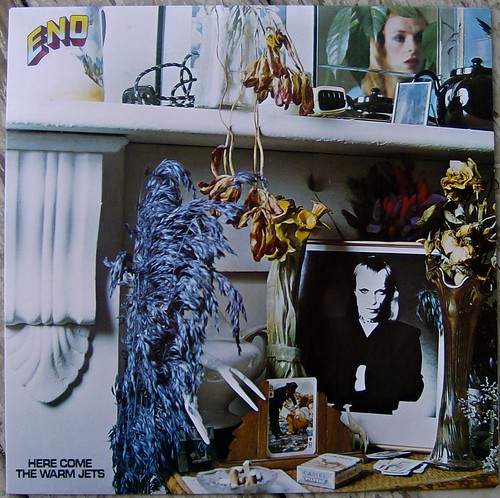WELCOME TO THE RECORD SHOP!


Here you will find discussions of Classic Albums that have been selected by Shane, Henry (professorchaos) and Bob (johnniegold), along with some guest reviewers now and again. We will attempt to bring you a new selection on a regular basis which will be discussed in this segment. Feel free to review the previously chosen selections or make a suggestion of an album or topic that you would like to see discussed here. Take a look around and enjoy.

THE RECORD SHOP'S CURRENT SELECTION: Led Zeppelin - Houses of the Holy
PREVIOUSLY DISCUSSED SELECTIONS
1. Every Picture Tells A Story - Rod Stewart

2. Surfer Rosa - The Pixies

3. Rubber Soul - The Beatles

4. Pet Sounds - The Beach Boys

5. Kind of Blue - Miles Davis

6. Blood on the Tracks - Bob Dylan

7. Trans-Europe Express - Kraftwerk

8. Who's Next - The Who
 [/
[/
9. The Velvet Underground & Nico - The Velvet Underground

10. My Favorite Things - John Coltrane

11. Eat A Peach -The Allman Brothers Band

12. Highway 61 Revisted - Bob Dylan

13. Green River - Creedence Clearwater Revival

14. Whipped Cream & Other Delights - Herb Alpert & The Tijuana Brass

15. At Folsom Prison - Johnny Cash

16. Aja - Steely Dan

17. Moondance - Van Morrison

18. London Calling - The Clash

19. The Ramones - The Ramones

20. Automatic For The People - R.E.M.

21. Arc Of A Diver - Steve Winwood

22. Sinatra: Live at the Sands - Frank Sinatra

23. Morrison Hotel - The Doors

24. Let It Bleed - The Rolling Stones

25. Abbey Road - The Beatles

26. Remain In Light - The Talking Heads

27. My Aim Is True - Elvis Costello

28. Exile on Main Street - The Rolling Stones

29. Disraeli Gears - Cream

30. Here Come The Warm Jets - Brian Eno

31. No Sleep 'til Hammersmith - Motorhead

32. Moving Pictures - Rush

33.Little Feat - Dixie Chicken

34.Neil Young - Everybody Knows This Is Nowhere

35.Gram Parsons - G.P./Grievous Angel

36.Neutral Milk Hotel - In The Aeroplane Over The Sea

37.Neil Diamond - Hot August Night

38.Jackson Browne - Running On Empty

39.The Beatles - Sgt. Pepper's Lonely Hearts Club Band


2. Surfer Rosa - The Pixies

3. Rubber Soul - The Beatles

4. Pet Sounds - The Beach Boys

5. Kind of Blue - Miles Davis

6. Blood on the Tracks - Bob Dylan

7. Trans-Europe Express - Kraftwerk

8. Who's Next - The Who

9. The Velvet Underground & Nico - The Velvet Underground

10. My Favorite Things - John Coltrane

11. Eat A Peach -The Allman Brothers Band

12. Highway 61 Revisted - Bob Dylan

13. Green River - Creedence Clearwater Revival

14. Whipped Cream & Other Delights - Herb Alpert & The Tijuana Brass

15. At Folsom Prison - Johnny Cash

16. Aja - Steely Dan

17. Moondance - Van Morrison

18. London Calling - The Clash

19. The Ramones - The Ramones

20. Automatic For The People - R.E.M.

21. Arc Of A Diver - Steve Winwood

22. Sinatra: Live at the Sands - Frank Sinatra

23. Morrison Hotel - The Doors

24. Let It Bleed - The Rolling Stones

25. Abbey Road - The Beatles

26. Remain In Light - The Talking Heads

27. My Aim Is True - Elvis Costello

28. Exile on Main Street - The Rolling Stones

29. Disraeli Gears - Cream

30. Here Come The Warm Jets - Brian Eno

31. No Sleep 'til Hammersmith - Motorhead

32. Moving Pictures - Rush

33.Little Feat - Dixie Chicken

34.Neil Young - Everybody Knows This Is Nowhere

35.Gram Parsons - G.P./Grievous Angel

36.Neutral Milk Hotel - In The Aeroplane Over The Sea

37.Neil Diamond - Hot August Night

38.Jackson Browne - Running On Empty

39.The Beatles - Sgt. Pepper's Lonely Hearts Club Band

Last edited by a moderator:


